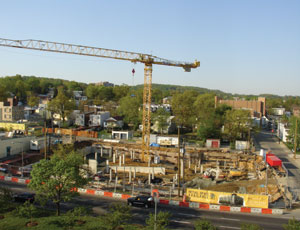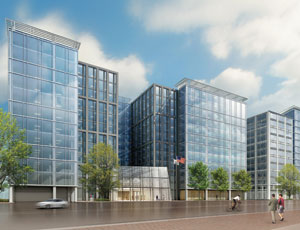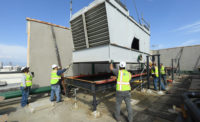With a strong emphasis on modernization work and green upgrades, the stimulus package has played to the strengths of contractors such as Grunley Construction of Rockville, Md. This summer, the company was awarded a $35-million contract to complete renovations to the Mary E. Switzer Building in D.C. The job is funded through the ARRA.


Grunley completed phase one of the building in 2008, but funding wasn’t available to award the second phase until it was added to the stimulus package, says Ken Grunley, president of Grunley Construction. Likewise, other projects that the firm has been tracking, including plans for the Hoover and Lafayette buildings, were stalled until the stimulus put them in motion.
“We had options on some of this work, but never could book those dollars,” he says. “We’ve got a good backlog now and a few more [bid] awards should get us through the bad times.”
Stagnant Stimulus Although the stimulus promises to inject opportunities into the Washington market, projects have been slow to move. By the end of June, federal agencies had awarded few projects locally, but prospects have since improved.
“I was a lot more concerned around April or May about what would happen,” says Bill Stinger, senior principal at HOK in Washington. “In June, we started to see a pickup in solicitations from a whole variety of federal agencies. We’re cautiously optimistic that these will be real projects by September.”
Despite the down economy, some unexpected sectors, such as federally funded cultural projects, continue to move forward. Russell Perry, managing director of SmithGroup in Washington, says the architecture firm has seen growth in its cultural studio this year. Stimulus dollars helped restart its stalled work at the Smithsonian Institution’s Arts and Industries Building. The company is also working on a master plan for the Smithsonian Institution Building, known as “The Castle.”
SmithGroup partnered with Freelon Adjaye Bond to design the National Museum of African American History and Culture. It will take up to three years to design the $500-million project with construction to begin in 2012. The museum is scheduled to open in 2015.
Between new cultural projects and some awards in institutional sectors, such as health care and higher education, Perry says the business is beginning to pick up.
“It’s not uncommon to see bids coming in at more than 30% below budget. That’s a sign of desperation.”
“The first quarter [of 2009] turned out not to be as bad as we thought, the second quarter was strong and our third quarter will be the strongest we’ve seen in a year,” he says. “We’re not out of the woods yet. We don’t have a lot of projects in construction documents right now, so I don’t know what the future holds.”
With the bulk of stimulus projects on short timelines and the latest round of BRAC work winding down by 2011, many firm executives admit they aren’t sure when the next wave of work will come.
Reg Arnold, senior regional vice president of Structure Tone in Washington, says he is banking on an echo of work to follow BRAC. “The government moves, then the [federal] contractors follow, and a lot of them have special needs like security work,” he says.
“We’ve even seen people talking about hospitality again. Around these new BRAC facilities, people will need temporary lodging, and we’re hearing private developers talk about hotels in those areas. More work will come. It’s just a matter of riding out the storm.”



Post a comment to this article
Report Abusive Comment